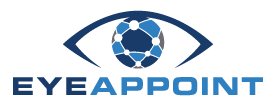During performance review season, it’s common to follow a predictable routine: bring each of your direct reports into a conference room, hand them an official-looking document, and engage in a repetitive conversation. You offer some positive feedback about their strengths, mix in some negative feedback about their weaknesses, and conclude with an attempt to boost their ego, all resulting in a mixed message that leaves even your best employees feeling disappointed. However, if you approach performance reviews differently, they can become an excellent opportunity to reinforce the accomplishments of your top performers and redirect the poor performers.
Insights from Experts
For both employees and managers, face-to-face performance reviews are often the most stressful work conversations of the year. “Being in a position to judge someone’s performance is inherently uncomfortable,” says Dick Grote, author of How to Be Good at Performance Appraisals. According to James Baron, the William S. Beinecke Professor of Management at Yale School of Management, evaluating job performance should be an ongoing process that includes regular feedback and a solid understanding of your employees. By building a relationship based on candid feedback and understanding their career aspirations, you can make performance reviews less nerve-racking and more productive. Regardless of the appraisal system your company uses, there are several strategies you can employ to improve the process.
Establish Clear Expectations Early
The performance review doesn’t begin with a sit-down in a conference room. It starts with setting clear expectations and evaluating employees throughout the year. At the beginning of the year, conduct “performance planning” sessions with each of your direct reports to discuss their goals and your expectations. This clarity helps improve performance right away because everyone knows what is expected of them, and it also gives you the authority to hold people accountable later on. Take the time to listen to your employees’ career aspirations and use that information to shape the way you assess their work. Understanding their goals will enable you to provide opportunities that broaden their professional experiences.
Prepare the Groundwork
Around two weeks before the face-to-face review, ask your employees to write down a few things they are proud of accomplishing over the past year. This exercise helps refresh your memory and shifts the focus to positive aspects, creating a more positive atmosphere. Review your own notes on their performance, including successful projects, missed deadlines, or instances of skillful client handling. Additionally, seek feedback from colleagues who work closely with your employees to gather different perspectives. The more independent evaluations you have, the better. Approximately an hour before the meeting, provide your employee with a copy of their appraisal. This allows them to have their initial emotional response in private. By giving them time to process their emotions and thoughts, they can approach the conversation with a calmer and more constructive mindset.
Set the Right Tone
Instead of using the common “feedback sandwich” approach, where compliments are followed by criticism and more niceties, choose a focused approach. Concentrate on the strengths and achievements of your good performers, providing them with a positive message that motivates and recognizes their competence. However, when dealing with marginal or poor performers, avoid sugarcoating the feedback. Use the face-to-face review as an opportunity to address their deficiencies and demand improvement. By avoiding avoidance, you prevent false encouragement and help the person understand the need for growth.
Provide Constructive Coaching
When discussing the performance of your solid performers, it’s important to gauge their perspective on how things are going. Since you are dealing with mature adults, they are likely to share their honest concerns. To provide feedback to both solid and poor performers, consider using the “stop, start, and continue” model. Identify what actions are currently ineffective and need to be stopped, what behaviors are highly effective and should continue, and what actions they can adopt to further enhance their performance. By focusing on specific behaviors rather than personal dispositions, the conversation becomes less personal and more constructive. Offer targeted praise and specific advice. Instead of vague statements like “be more proactive,” provide actionable guidance such as “take more initiative in calling potential sales leads.” Similarly, when recognizing someone as an innovator, it is helpful to highlight the specific actions they have taken that demonstrate their innovative mindset.
Hold your ground
Money and rank are sensitive topics during performance reviews. If possible, separate discussions about compensation from the review. If you must discuss salary, share the information at the beginning of the conversation to avoid distracting the employee throughout. Rank can also be a touchy subject, as many companies use a scale to rate employees. Keep in mind that most employees will fall in the middle rank, which indicates meeting expectations. Communicate this clearly and emphasize that meeting expectations is a significant achievement. Help employees understand the context and adjust their expectations accordingly.
EyeAppoint offers a variety of solutions to improve employee performance and office outcomes. See how we can help by viewing our services page.

